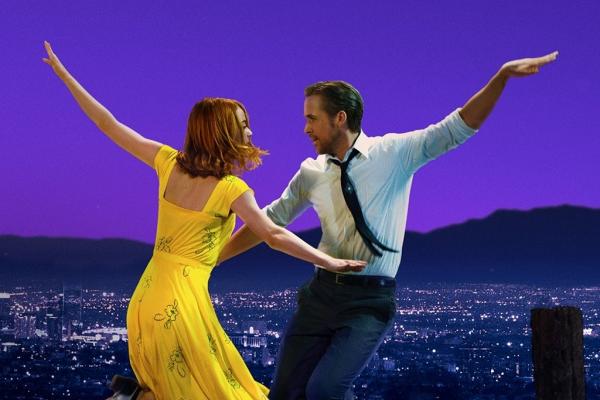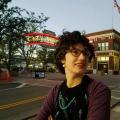It’s been a hard year for everyone — and for movies. Between big-budget sequels that cried out for a fresh injection of imagination, and bleak dramas that seemed even darker in the midst of post-election malaise, we need a good dose of “movie magic” more than ever — the kind that lets you spend two hours in a darkened theater, losing yourself in another world.
On the surface, the new film La La Land looks like it could be that escape. Director Damien Chazelle’s modern musical is bright and colorful, with some joyful scenes that are direct throwbacks to classic movie-musicals of old, like Singin’ in the Rain, An American in Paris, or The Umbrellas of Cherbourg.
But sadly, like many of the two-dimensional sets wheeled through the film’s L.A. setting, La La Land doesn’t stand up to much scrutiny.
The film tells the stories of aspiring actress Mia (Emma Stone) and jazz musician Sebastian (Ryan Gosling). They’re both dreamers, both moved by nostalgia in different forms — Mia loves classic movies, Sebastian’s a devotee of old-school jazz greats. When they meet, neither is having much success in their chosen profession. The pair fall in love and are staunch supporters of each other’s dreams, until their ambitions and compromises take them in different directions.
From its Cinemascope lenses to its color palette to mimicking shots and musical cues from classic films, La La Land shares its characters’ love for the old-school. Director Chazelle finds magic and fun in Los Angeles’ most cliched settings — a traffic-crowded on-ramp and a miserably self-involved Hollywood party each become settings for showstopper song and dance numbers. That classic feel and sense of enchantment also makes the blossoming romance between Stone and Gosling lovely to watch, particularly a moment when the pair sneak into the Griffith Observatory after hours, and end up literally dancing among the stars.
But it’s after this that the film loses steam, and quickly. The chief issue is that there’s not enough of a conflict to make Mia and Sebastian’s stories very interesting. To put it simply, their problems...aren’t problems. Sebastian takes a job in a band for steady work, a compromise which Mia questions because Sebastian isn’t passionate about their music. However, the band is successful, and though Sebastian scoffs at the band leader, Keith (John Legend), Keith gives us no reason to suspect that he’s a bad guy. Mia is disappointed when her one-woman show flops, but it would be surprising if anyone showed up to a play starring someone they’d never heard of.
These are, at best, first-world problems. Not only do they make the story less interesting, they make the characters seem petty as well. There are plenty of people living in L.A. with perfectly reasonable dreams whose lives are much harder than Mia and Sebastian’s, but still make it work. Some of their stories even make great movies, such as 2015’s trans buddy comedy Tangerine.
La La Land is ostensibly a movie about the joy of love and the power of dreams, a movie that empowers filmgoers to see a little magic and opportunity in everything. While that’s an optimistic, positive message, it loses potency by showing just how little room there is for real life — with all its compromises and challenges — in the dreams of its main characters. Mia and Sebastian (and, by extension, director Chazelle) are full of wide-eyed nostalgia. Unfortunately, that love of the past seems to have clouded their ability to deal with the needs of now.
Got something to say about what you're reading? We value your feedback!

